Creating a Volcano Was a Blast! A Recipe for an Explosively Fun Experiment (A Volcano Model Made with Plaster and Baking Soda)
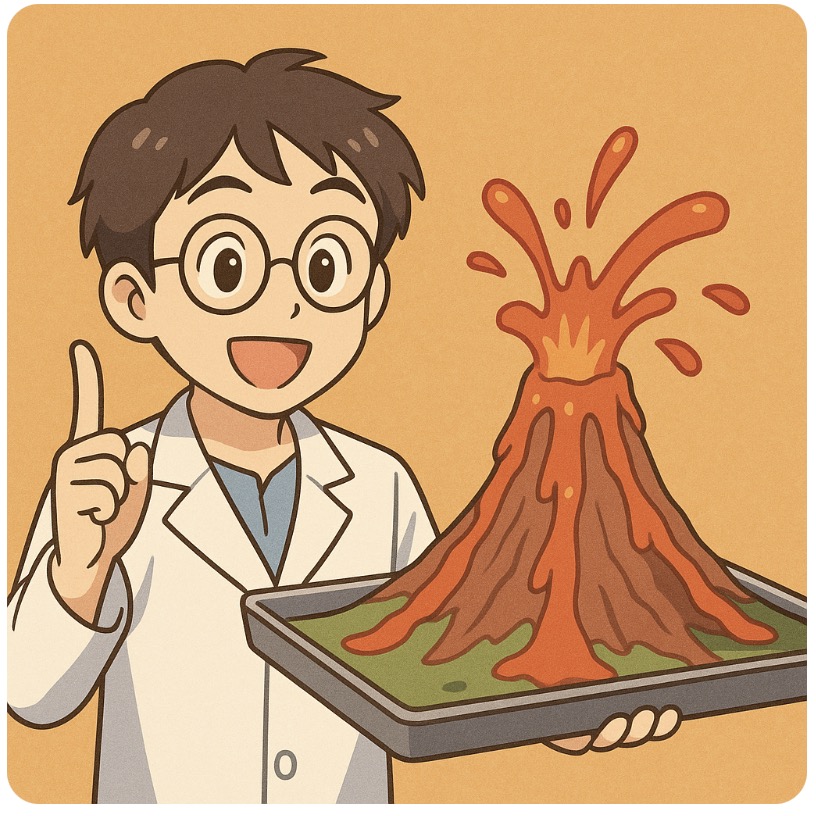
Science class is always most exciting when you can get hands-on. As teachers, there’s nothing more rewarding than seeing our students’ eyes light up and hearing them exclaim, “I get it!” I recently taught a lesson on volcanoes with a student teacher, Mr. H, and our eruption experiment turned out to be an incredible, inquiry-driven experience.
“How does magma’s viscosity relate to the shape of a volcano?”
The real fun of science isn’t just memorizing facts from a textbook; it’s about seeing, touching, and feeling the concepts for yourself. That’s why we decided to build a model volcano using everyday materials. This experiment might seem simple at first glance, but it’s surprisingly profound.
We used just four ingredients: plaster, baking soda, laundry starch, and water. By simply adjusting the ratio of these four ingredients, we could completely change how the “magma” behaved and how viscous it was. It felt just like we were simulating real volcanic activity.
The most fascinating part is the chemical reaction that occurs when you combine plaster (calcium sulfate: CaSO₄), baking soda (sodium bicarbonate: NaHCO₃), and water. As you might know, this reaction produces carbon dioxide (CO₂)! The CO₂ gas causes the mixture to puff up, just like a real volcano slowly swells before an eruption. Realizing that simple chemistry can lead to such grand natural phenomena is the true joy of science education.
Mr. H and I went through countless attempts, changing the ratios over and over until we finally found the perfect recipe. It took us a good amount of time, but the feeling of accomplishment when we got it right was incredible. It was a perfect reminder of what scientific inquiry is all about.
In this article, we’ll share the details of our successful volcano experiment, including the ratios we discovered and a step-by-step account of what happened!
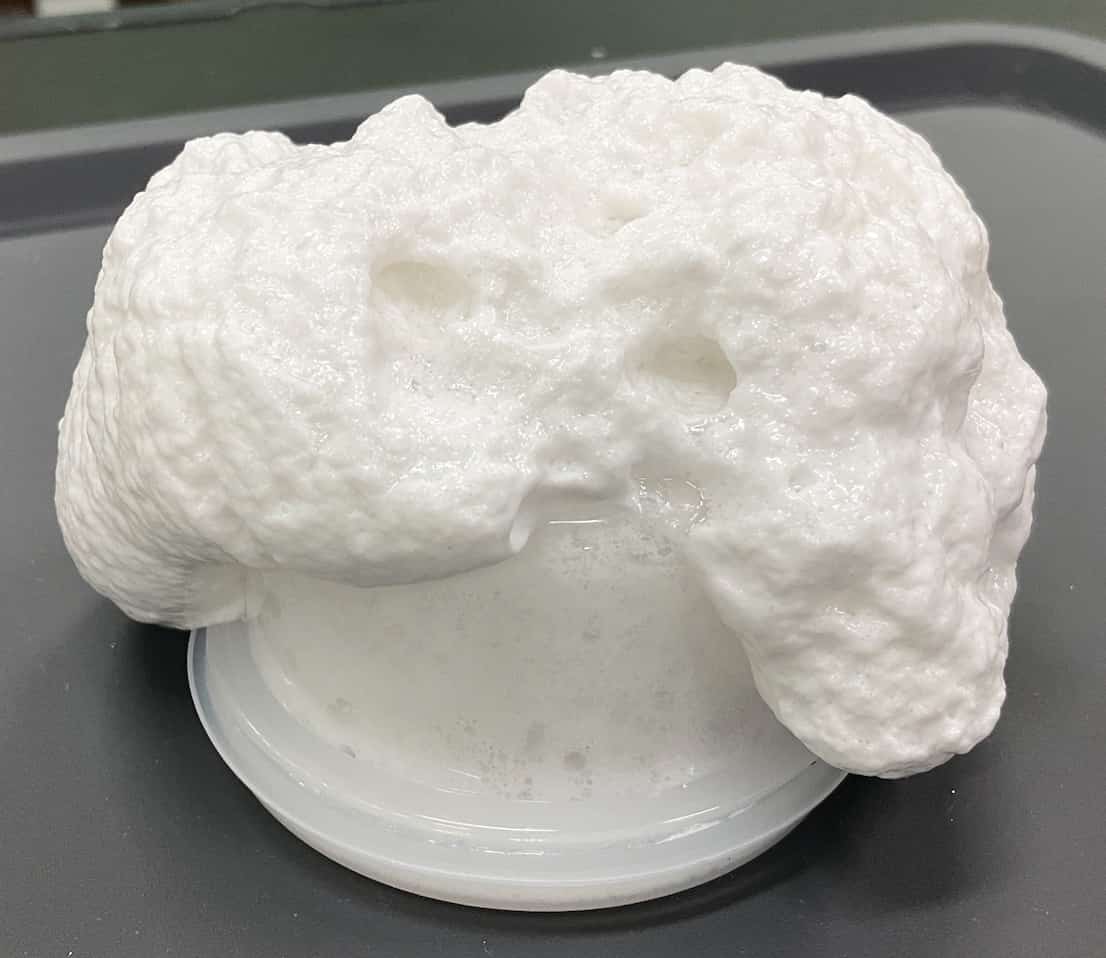
Materials
- Plastic container
- Plaster (10g, in a zip-lock bag)
- Baking soda (5g, in an evaporating dish)
- Liquid starch (PVA)
- Water
- Spatula
- Glass stirring rod
- Tray
For the plastic container, we used one we found at Daiso.
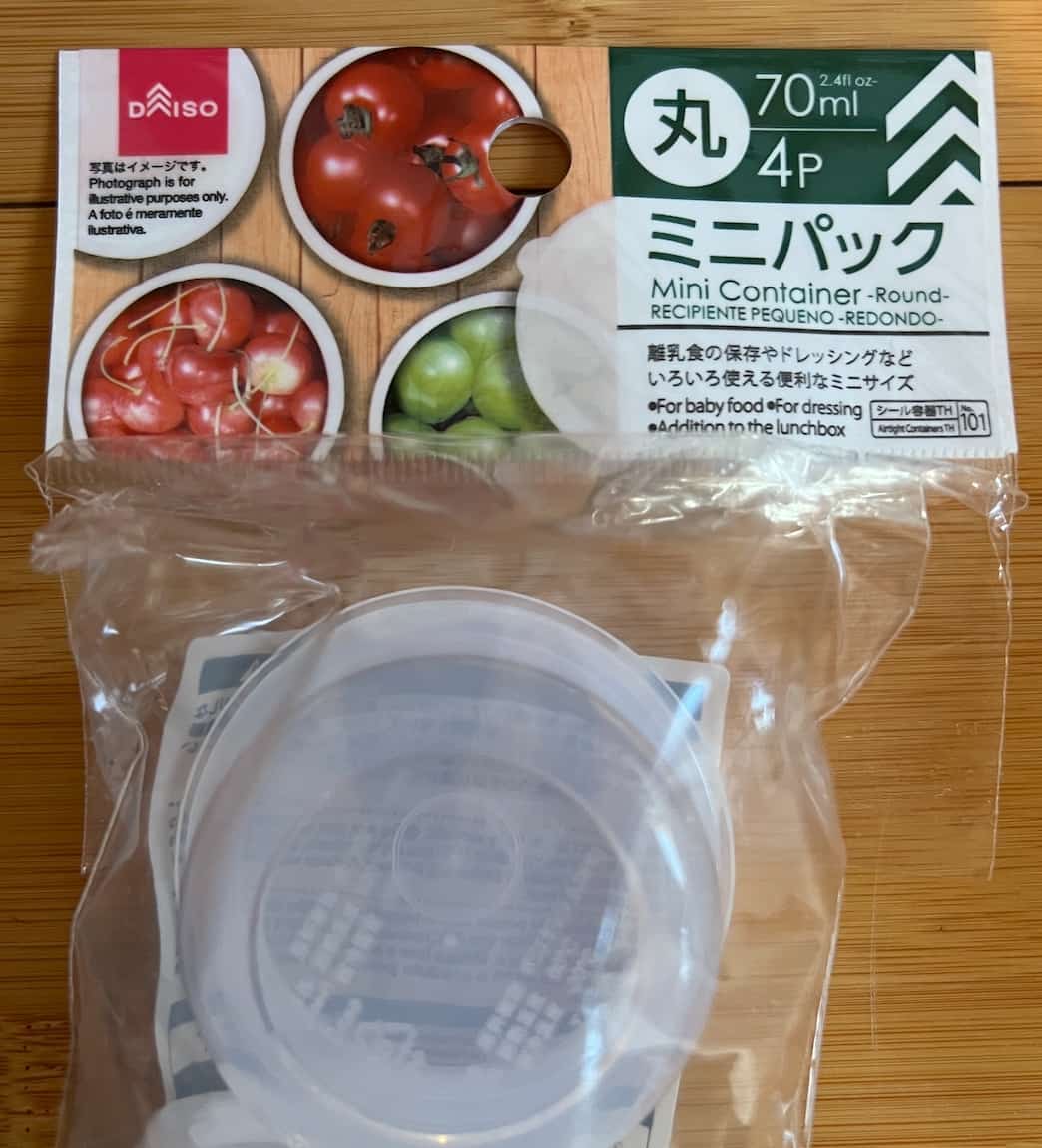
First, use an awl to make a hole in the bottom of the plastic container and cover it with cloth tape.
Next, prepare the two different mixtures.
For low-viscosity magma: 1 ml of PVA glue + 30 ml of water
For high-viscosity magma: 10 ml of PVA glue + 15 ml of water
Pre-mix these into two separate containers.
Experimental Procedure
① Thoroughly mix the PVA glue and water in the plastic container with a glass stirring rod.
② Add 10g of plaster (from the zip-lock bag) to the mixture.
③ Mix the plaster, PVA glue, and water together thoroughly with the glass stirring rod.
④ Once it’s well-mixed, add 5g of baking soda and stir quickly to combine everything.
- Tip: This part is key—mix everything quickly, then immediately put on the lid!
- Note: Baking soda can be lumpy, so break it up with a spatula beforehand.
⑤ Close the lid, flip the container upside down onto the tray, and immediately peel off the cloth tape.
⑥ Observe the spread of the “lava” from directly above.
- Safety First: All participants must wear white coats, safety glasses, and polyethylene gloves!
Repeat the entire procedure for both the high and low-viscosity mixtures.
Here’s what happens when you perform the experiment.
High-Viscosity Magma
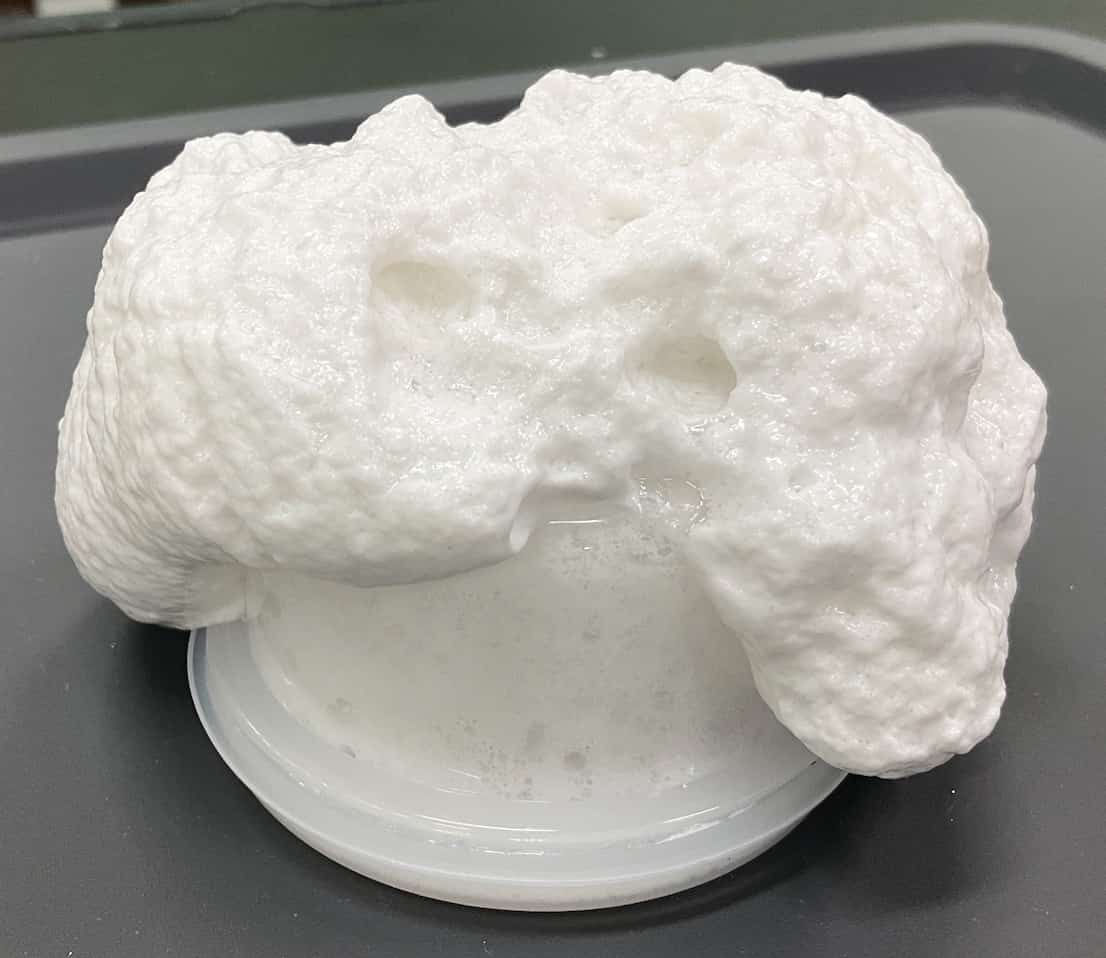
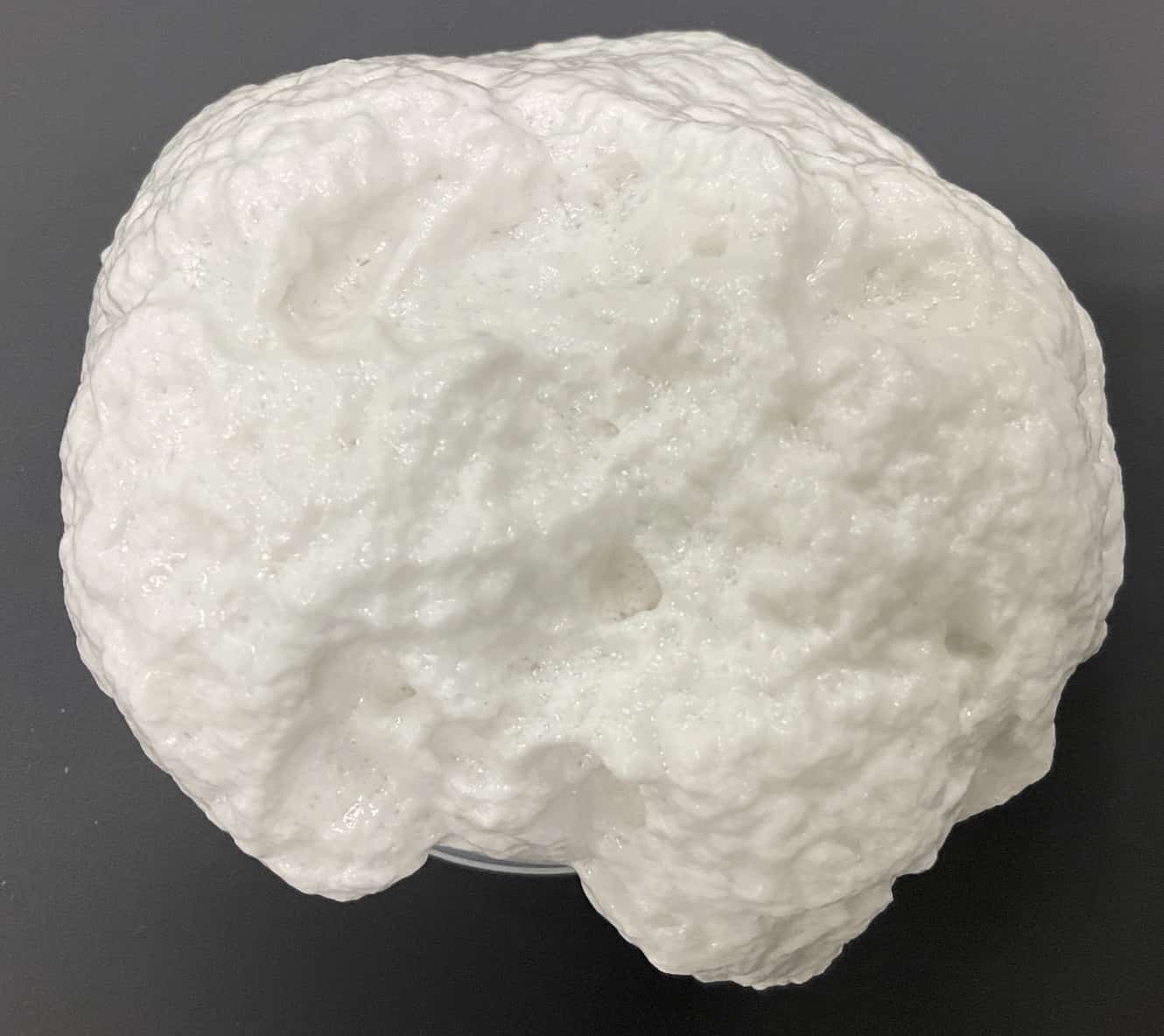
Low-Viscosity Magma
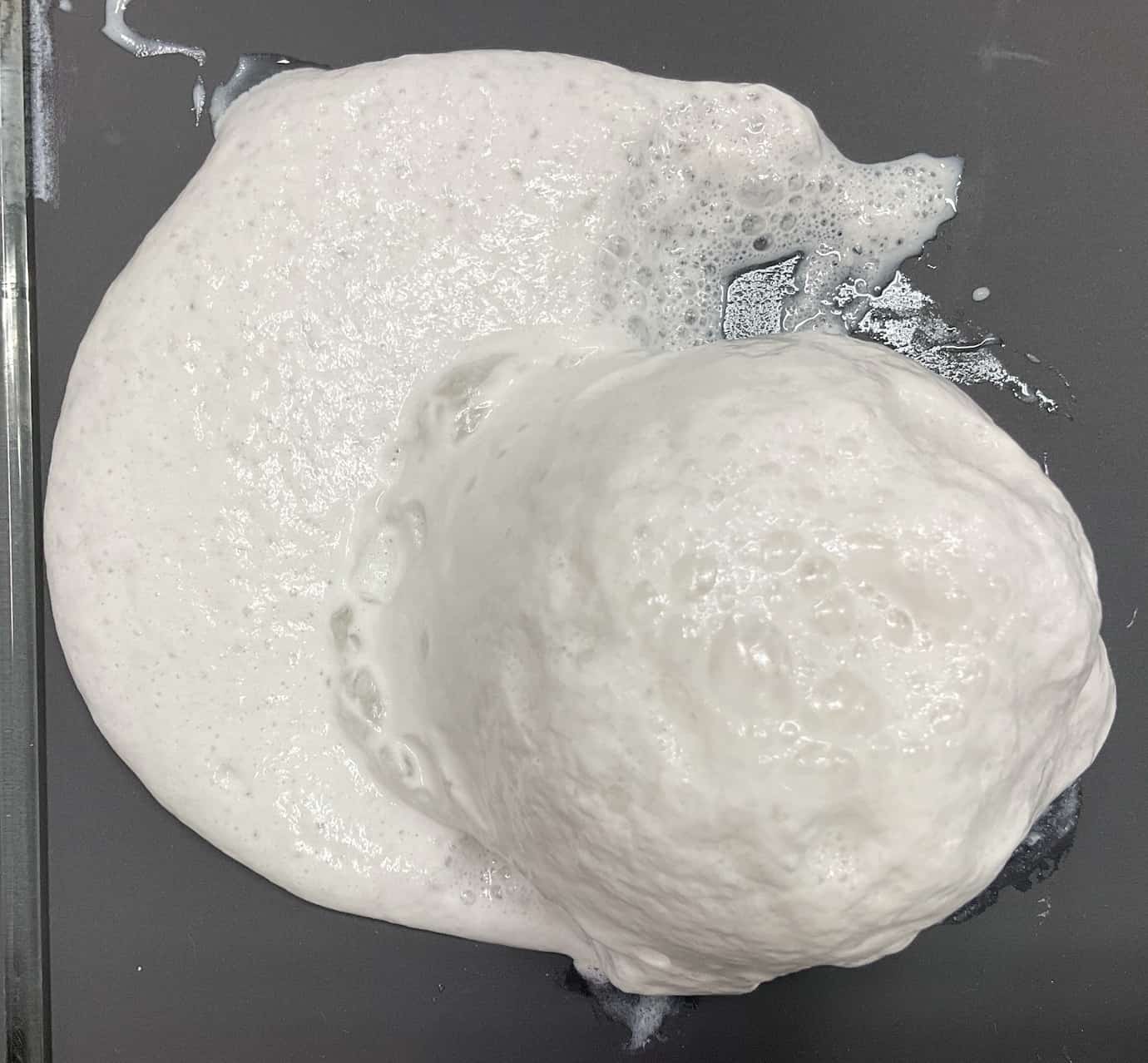
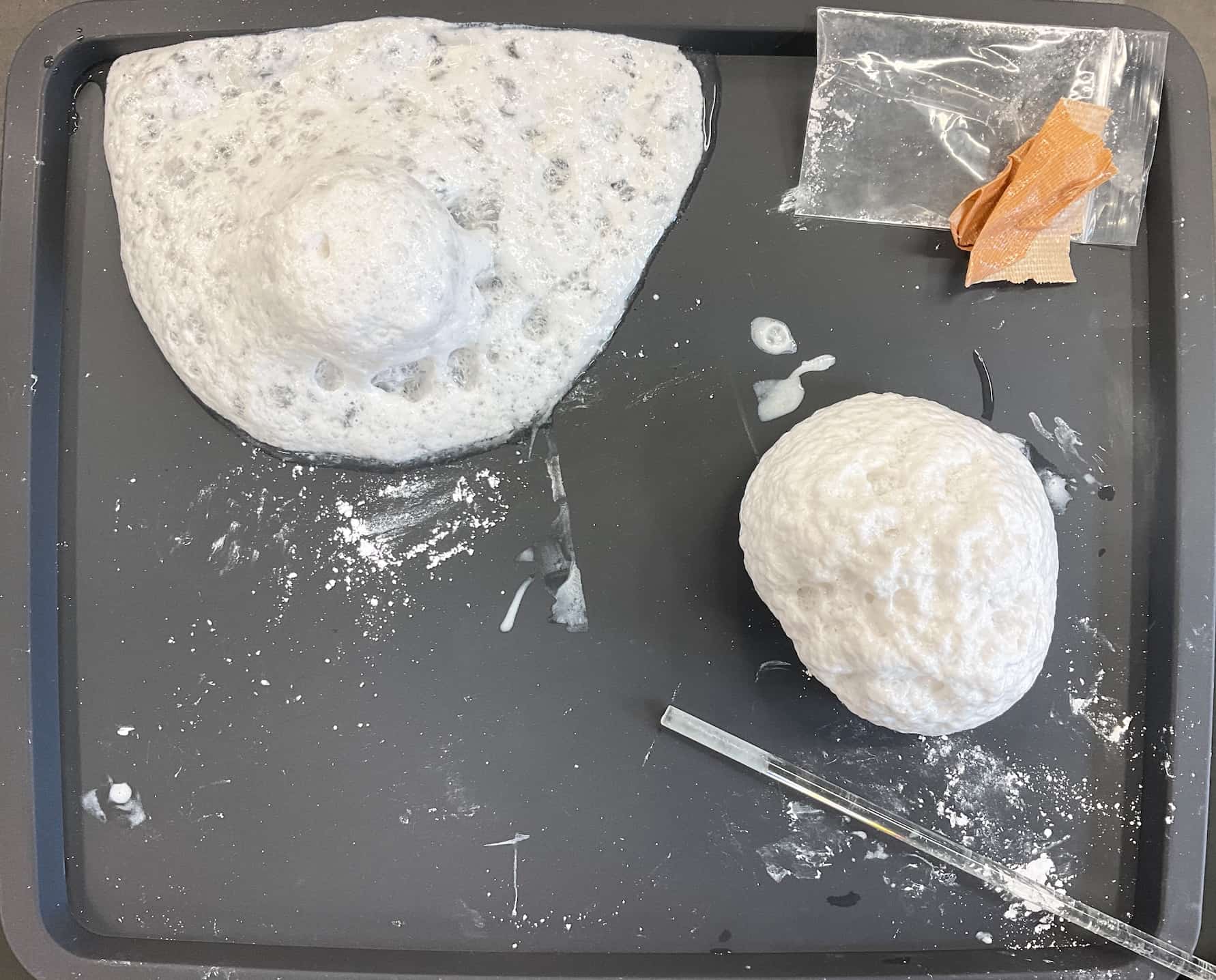
We prepared four sets for our students, and it was a huge success! The proportions were perfect—a big thank you to Mr. H for his help.
Why Does This Mixture Erupt?
The key to this experiment lies in the chemical reaction between the plaster, baking soda, and water.
1. Carbon Dioxide Production from Baking Soda’s Decomposition: When baking soda (sodium bicarbonate: NaHCO₃) dissolves in water, some of it breaks down to produce carbonate ions (CO₃²⁻), bicarbonate ions (HCO₃⁻), and ultimately, carbon dioxide (CO₂) and water.
2NaHCO₃ ⇌ Na₂CO₃ + H₂O + CO₂↑
2. Carbon Dioxide Production from the Plaster-Baking Soda Reaction: Calcium ions (Ca²⁺) from the dissolved plaster (calcium sulfate: CaSO₄) react with the bicarbonate ions (HCO₃⁻) from the baking soda. This reaction creates a precipitate of calcium carbonate (CaCO₃) and, at the same time, generates carbon dioxide (CO₂) and water.
CaSO₄ + 2NaHCO₃ → CaCO₃↓ + Na₂SO₄ + H₂O + CO₂↑
The Role of Laundry Starch (PVA)
The polyvinyl alcohol (PVA) found in the laundry starch shows a high viscosity when dissolved in water due to its long, tangled molecules. This PVA plays a crucial role by trapping the carbon dioxide gas bubbles. This prevents the gas from escaping all at once, allowing it to slowly expand and then erupt, creating a “viscous eruption.”
If you use less PVA, the bubbles escape quickly, resulting in a runny eruption (like a Hawaiian shield volcano). If you use more, the mixture becomes very thick, and it will slowly build a dome (like a lava dome such as Showa-shinzan).
Through this experiment, students don’t just see how a volcano’s shape is created. They also gain a deeper understanding of how the underlying chemical reactions and physical properties of materials influence a natural phenomenon like an eruption.
With a little ingenuity and some trial and error, this volcano eruption experiment can become a truly captivating lesson that inspires students’ curiosity. I highly recommend you try it in your next class!


